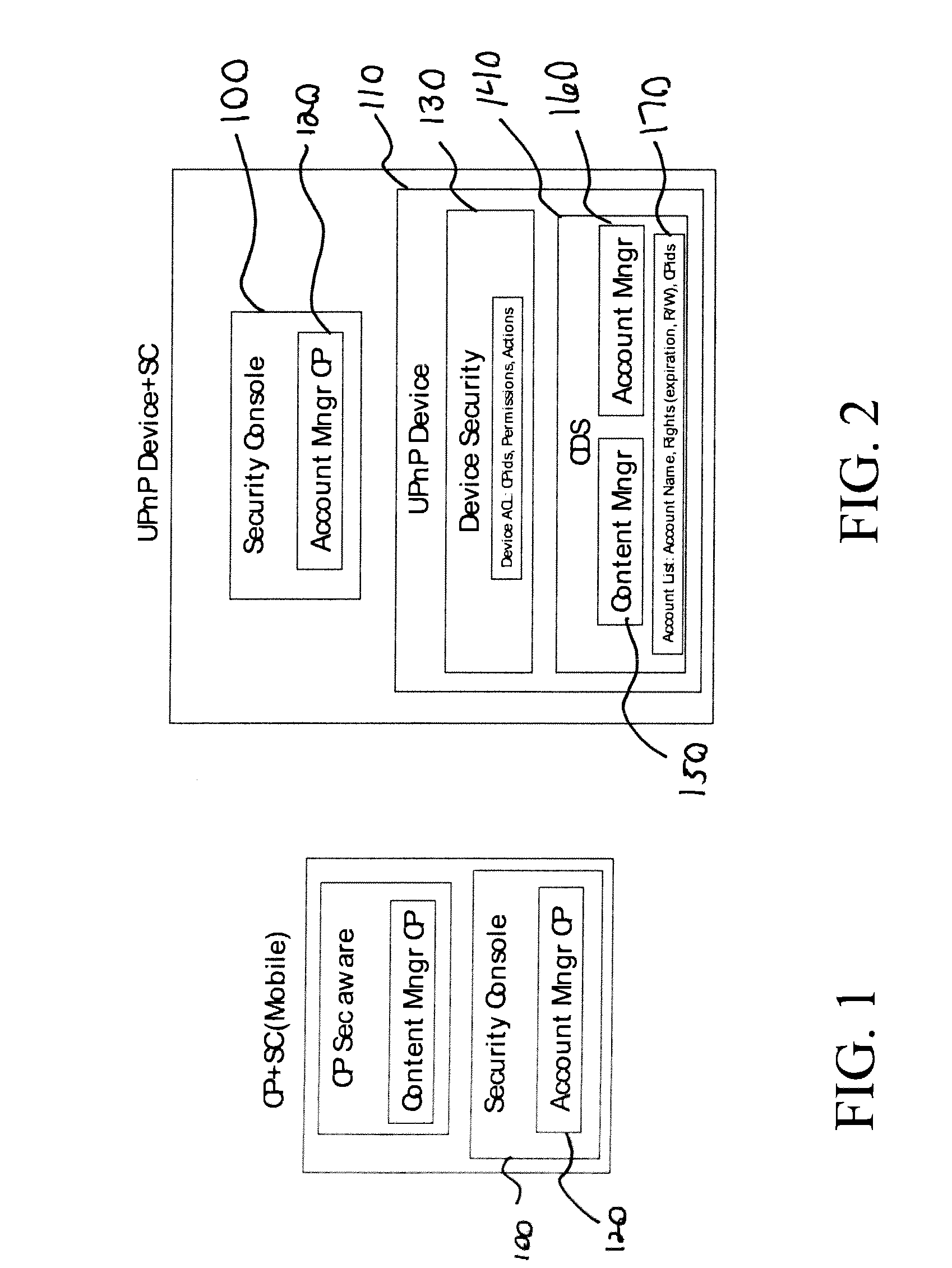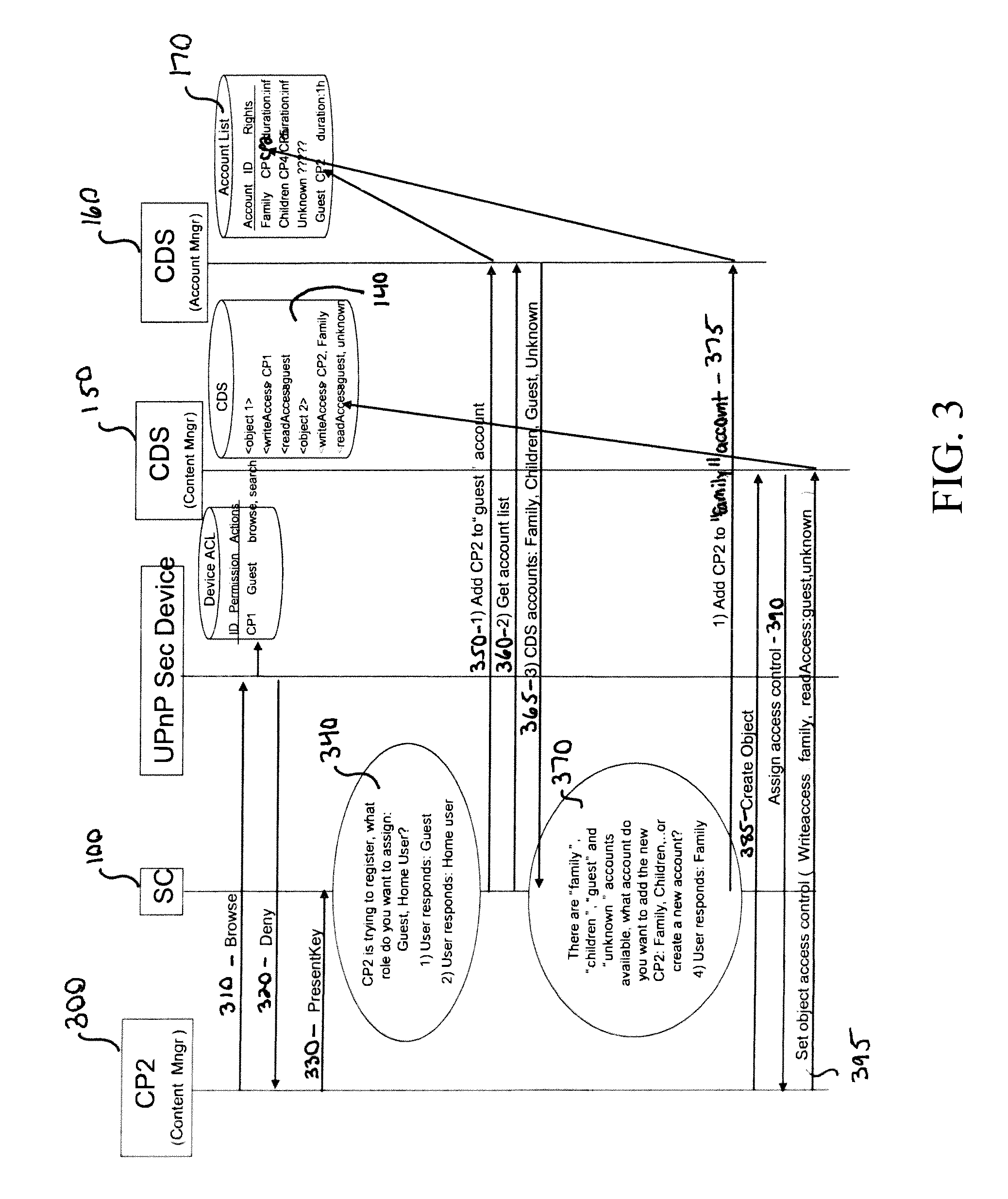SYSTEM AND METHOD FOR PROVIDING CONTENT SECURITY IN UPnP SYSTEMS
- Summary
- Abstract
- Description
- Claims
- Application Information
AI Technical Summary
Benefits of technology
Problems solved by technology
Method used
Image
Examples
Embodiment Construction
[0019] The present invention provides a CDS security service which, in a user friendly manner, specifies which users of a media server or other UPnP device own which content, as well as permitting the owners to control who is permitted to read the content. A CDS account manager is used for defining user accounts and associated rights, such as validity periods and default rights. The CDS account manager is used by the security console which owns the media server. A CDS content manager is used for manipulating the rights to objects. The CDS content manager is used by a registered security aware control point (i.e., a control point associated with a user account) and can be used to change read and write access lists on the object.
[0020]FIG. 1 is a depiction of a security console 100 embedded in a UPnP device in the form of a media server 110. The security console 110 includes an account manager control point 120. The media server 110 includes a device security portion 130 and a CDS po...
PUM
 Login to View More
Login to View More Abstract
Description
Claims
Application Information
 Login to View More
Login to View More - R&D
- Intellectual Property
- Life Sciences
- Materials
- Tech Scout
- Unparalleled Data Quality
- Higher Quality Content
- 60% Fewer Hallucinations
Browse by: Latest US Patents, China's latest patents, Technical Efficacy Thesaurus, Application Domain, Technology Topic, Popular Technical Reports.
© 2025 PatSnap. All rights reserved.Legal|Privacy policy|Modern Slavery Act Transparency Statement|Sitemap|About US| Contact US: help@patsnap.com



